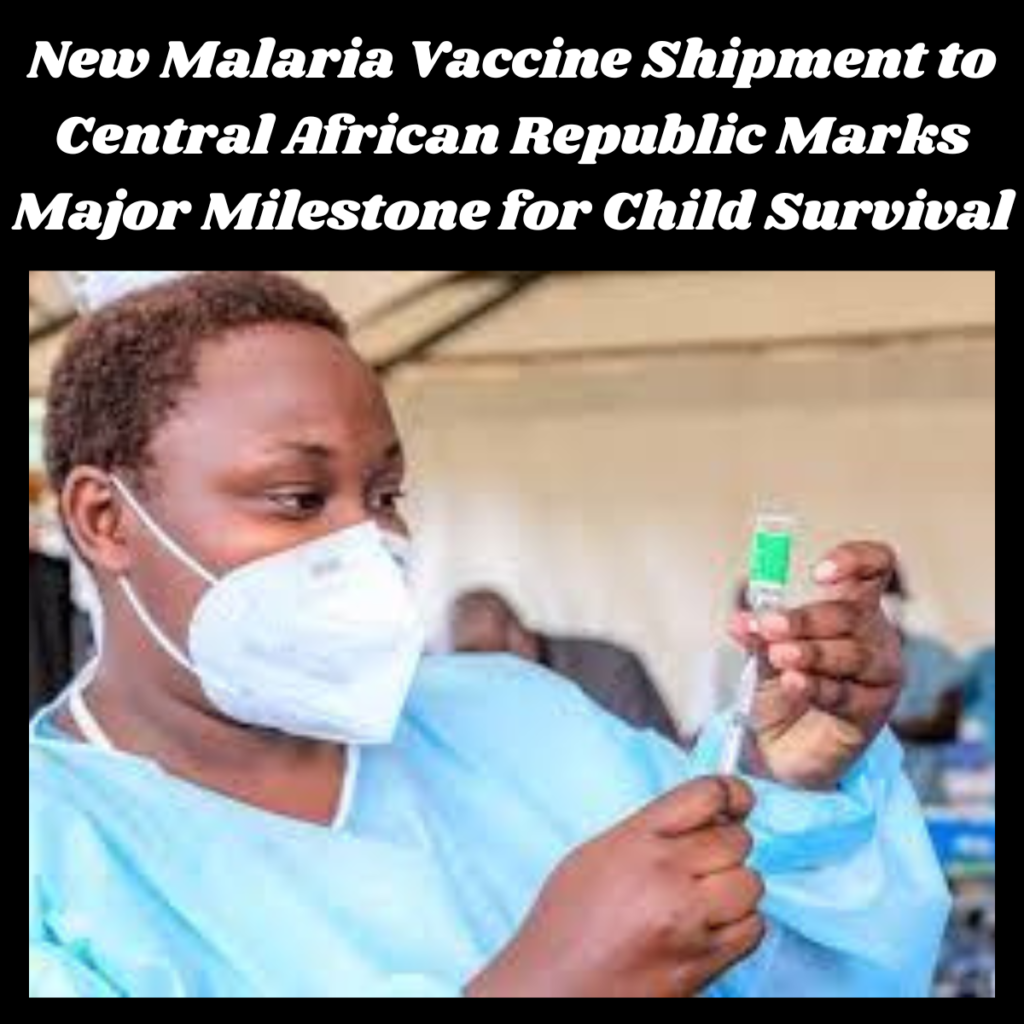Introduction
A significant step has been taken in the fight against malaria with the shipment of the newest malaria vaccine, R21, to the Central African Republic. This initiative is part of a broader effort by Gavi, UNICEF, and WHO to enhance malaria prevention and protection for children in Africa.
Vaccine Shipment Details
- Delivery of R21 Vaccine: UNICEF delivered over 43,000 doses of the R21/Matrix-M malaria vaccine to Bangui, Central African Republic. An additional 120,000 doses are expected in the coming days.
- Significance: This marks the first time the R21 malaria vaccine is being used in routine childhood immunization in any country.
Dual Vaccine Strategy
- WHO Recommendations: R21 is the second malaria vaccine recommended by WHO for children in malaria-endemic areas, alongside the RTS,S vaccine.
- Sufficient Supply: With both vaccines available, there is now enough supply to scale up malaria vaccination efforts across Africa.
- Funding: The distribution of these vaccines is supported by Gavi, the Vaccine Alliance.
Statements from Key Figures
- Leila Pakkala, UNICEF: “With two products now available, an expanded supply of malaria vaccines is a game changer for child survival and health. Our priority is for the vaccines to reach every child at risk.”
- Dr. Sania Nishtar, Gavi: “Having two safe and effective vaccines means we have greater supply security and can meet countries’ needs, saving thousands of lives each year.”
Impact of Malaria
- Mortality Rates: Malaria is a leading cause of death for children under 5 in Africa, killing nearly half a million annually.
- Central African Republic Statistics: In 2022, the country reported approximately 1,733,000https://newscity.org/suspected-congo-virus-case-reported-in-rawalpindi/ malaria cases, resulting in 5,180 deaths.
Broader Rollout and Preparations
- Countries Receiving R21: Besides the Central African Republic, countries like Chad, Côte d’Ivoire, the Democratic Republic of Congo, Mozambique, Nigeria, South Sudan, and Uganda are also preparing to receive R21 shipments.
- RTS,S Vaccine Distribution: So far, 4.33 million doses of RTS,S have been delivered to eight countries, with more shipments planned for Burundi and Niger.
Support and Implementation
- Government Requests: Vaccine deliveries depend on government readiness and their requests to include these vaccines in routine immunization programs.
- Support from Partners: Gavi, UNICEF, WHO, and other partners are assisting governments in developing implementation plans, training health workers, engaging communities, and ensuring cold chain capacity.
Comprehensive Malaria Control
- Integrated Approach: Malaria vaccines are part of comprehensive national malaria control plans, which include:
- Insecticide-treated bed nets
- Targeted indoor residual spraying
- Chemoprevention
- Diagnosis and prompt treatment
- Community Demand: The high demand for malaria vaccines provides an opportunity for children to receive other necessary childhood vaccines.
Conclusion
The introduction of the R21 vaccine, along with the RTS, S vaccine, marks a significant advancement in the fight against malaria. These efforts, supported by international organizations and governments, aim to substantially reduce childhood deaths from malaria and improve overall public health in affected regions.
The R21 vaccine, known for its high efficacy and promising trial results, complements the RTS,S vaccine’s pioneering efforts by targeting different aspects of the malaria parasite and enhancing protection. This dual-vaccine strategy is poised to make a profound impact on public health, particularly in regions where malaria remains endemic.
Supported by a coalition of international organizations, governments, and philanthropic entities, these vaccination campaigns are not just about introducing new medical solutions but are part of a broader strategy to eliminate malaria as a major public health threat. By focusing on high-risk populations, especially young children who are most vulnerable to severe forms of malaria, these initiatives aim to drastically reduce childhood deaths and improve overall health outcomes in affected areas.
The combined efforts are expected to bolster existing malaria control programs, drive down transmission rates, and pave the way for a future where malaria is no longer a significant health burden.
Table of Contents
References:
- UNICEF
- Gavi, the Vaccine Alliance
- World Health Organization (WHO)

